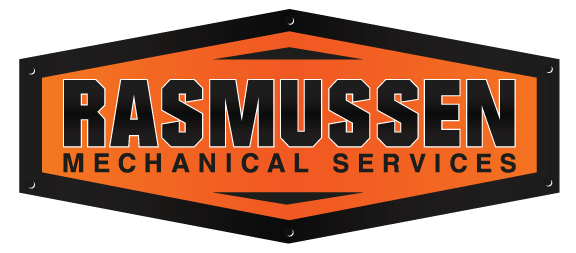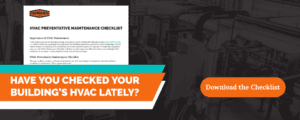Air in hydronic systems can be a significant issue, leading to the formation of iron oxides—commonly known as rust and scale. These compounds can cause blockages, reduce efficiency, and lead to premature equipment failure. In this article we talk about how air affects your system and how an air separator works.
Why Is Air a Problem in Hydronic Systems?
When iron comes into contact with water, they react to form ferrous hydroxide:
Fe + 2H₂O = Fe(OH)₂ + 2H⁺ Iron + Water = Ferrous Hydroxide + Hydrogen
The outer layer of ferrous hydroxide acts as a protective barrier for the remaining iron. However, if dissolved oxygen is present, it reacts with ferrous hydroxide to form ferric hydroxide, which is rust:
4Fe(OH)₂ + O₂ + H₂O = 4Fe(OH)₃ Ferrous Hydroxide + Oxygen = Ferric Hydroxide (Rust)
If dissolved oxygen continues to cycle through the system, it will keep removing ferrous hydroxide until the metal fully dissolves. This process can lead to holes in economizers, boiler tubes, or feedwater piping, causing leaks and even system breakdowns. However, not all corrosion is the same. Let’s explore the different types of corrosion that can occur in a boiler system.
Air and Dirt Problems in Hydronic Systems

Spirotherm Coalescing Air and Dirt Separator
Air in a hydronic system can lead to several issues, including:
- Flow Blockages: Air pockets and sediment can block water flow, causing a loss of heating or cooling.
- Imbalance: Air can cause flow balancing issues, resulting in uneven heating or cooling.
- Noise: Piping systems may emit a “whooshing” sound due to trapped air, causing annoyance and signaling inefficiency.
- Cavitation: Centrifugal pumps can suffer from cavitation due to air, leading to damage and reduced lifespan.
- Poor Heat Transfer: Unfortunately air is an excellent insulator. Therefore it reduces the efficiency of heat transfer and leads to poor system performance.
- Equipment Fouling: Air can lead to fouling of equipment, resulting in thermal fatigue and oxygen pitting.
Signs You Have Air in Your Hydronic System
If your system is suffering from any of the following symptoms, it may be time to consider installing an air separator:
- “Whooshing” sounds in the piping
- Jumping pressure gauges
- “Gravely” sounds at pumps in closed systems
- Low system delta T’s (temperature difference)
- High cooling coil discharge air temperatures
- Reduced pump performance
- Heat transfer equipment not meeting capacity
- Constant venting from high points in the system
- Frequent cleaning of strainers or replacement of pump seals
The Role of Air Separators in Hydronic Systems

A good visual showing air rising to the top of the coalescing filter and dirt (or rust and scale) falling to the bottom.
An air separator works by passing water through a coalescing material. This material attracts small air bubbles, causing them to coalesce into larger bubbles. As these larger bubbles rise to the top, they vent from the system. The real magic comes from the fact that water naturally wants to absorbs air. The water passes through the separator and gives up its air. It then goes out and looks for more air to absorb and repeats this process over and over.
High-quality air separators are capable of removing free air, entrained air, and up to 99.6% of dissolved air from the system. By doing so, they can significantly reduce the need for chemical treatments and improve overall system efficiency.
Dirt Separators
Where there’s air, there’s often dirt—particularly rust and scale. Many air separators come with the ability to also function as dirt separators, capable of filtering out particles as small as 5 microns. Proper sizing of an air separator is critical, based on your system’s GPM (gallons per minute) and pipe size.
Types of Air Separators
Understanding the different types of air separators available can help you choose the best option for your hydronic system. The three main types of air separators are:
There are several types of air separators available for hydronic systems, each designed to efficiently remove air and improve system performance. Tangential Air Separators remove air from closed-loop systems by creating a low-velocity vortex that separates air from fluids. In-Line Air Separators install directly in the piping and utilize internal baffles to separate air from the water. Sediment-Removal Separators remove trapped sediment, keeping the system clean. Air & Dirt Separators combine the functions of air and sediment separation in one unit. Finally, Air Purgers or Air Scoops are basic devices that help vent trapped air from the system. Choosing the right type of air separator can enhance the efficiency and longevity of your system. Always take into account flow rate, system pressure, and available space.
Installation Tips for Air Separators
For optimal performance, install separators at the hottest point in the system, where the pressure is the lowest. For example, in a boiler system, the best place for an air separator is on the discharge side of the boiler. In a chilled water system, it’s best installed on the return line to the chiller.
Conclusion
An air separator can play a vital role in maintaining the efficiency and longevity of hydronic systems. By removing air and dirt from the water, they prevent common issues like blockages, noise, and equipment fouling. Properly selecting and installing a separator will reduce maintenance and extending the life of your equipment .


